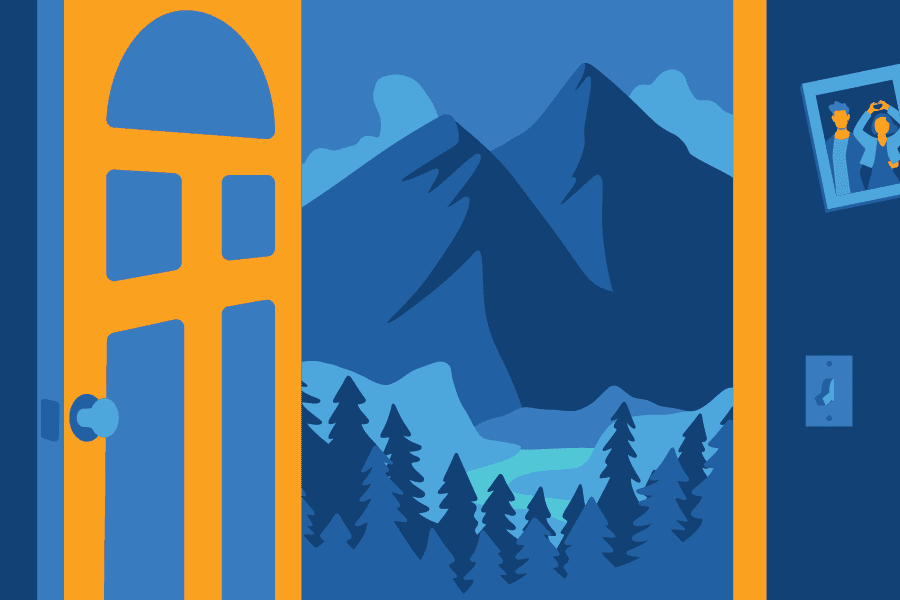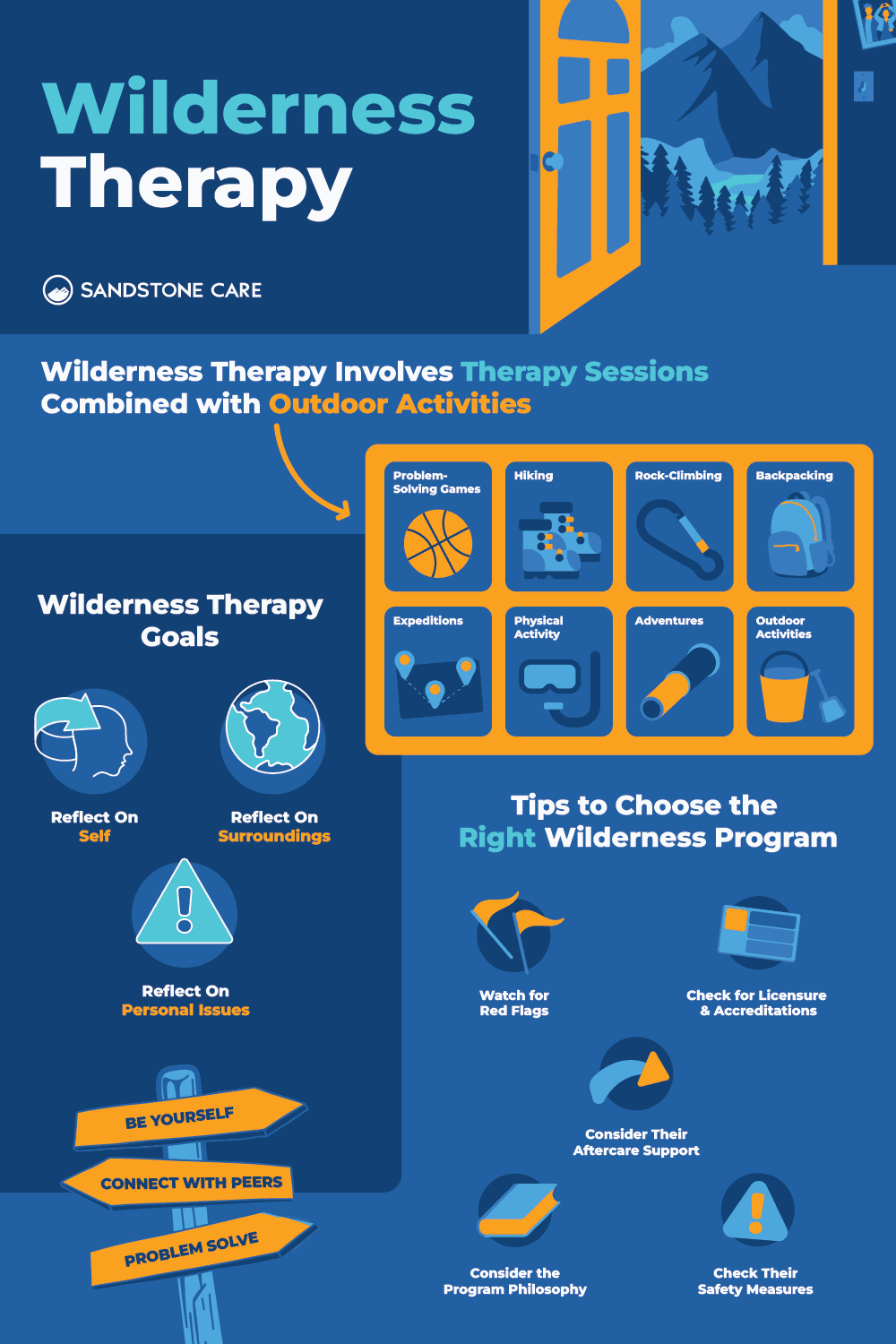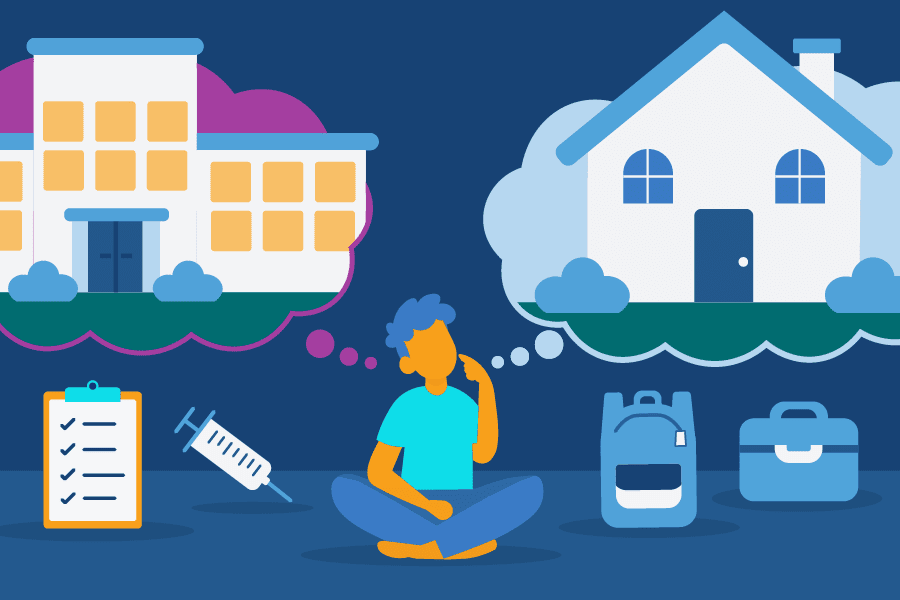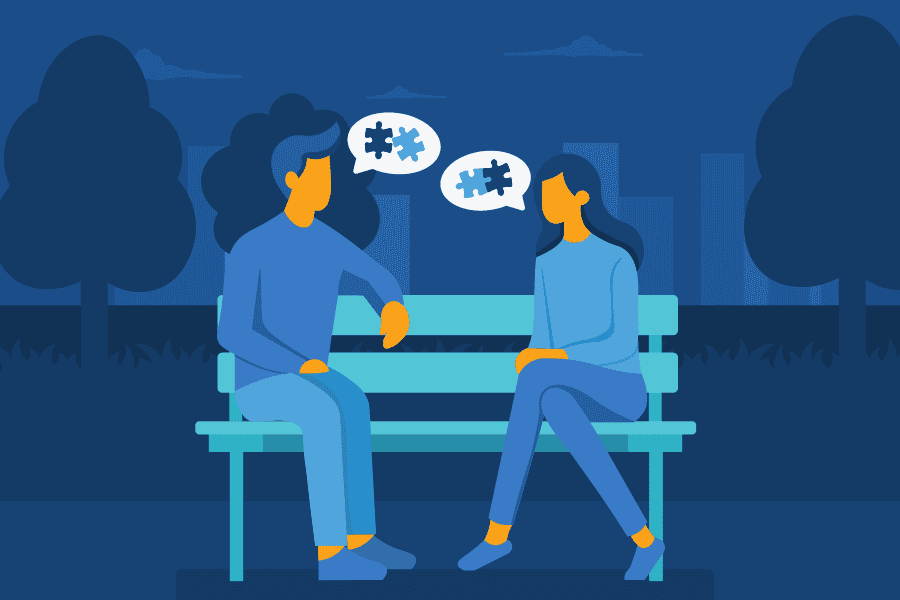Wilderness Therapy Overview
What Is Wilderness Therapy?
Wilderness therapy is a unique treatment approach that uses outdoor experiences to help people with mental health, substance use, and behavioral disorders.
Sometimes the best way to make a change in your life is to go on an adventure. Many teens and young adults have a hard time opening up during talk therapy with a single mental health professional in an office.
Wilderness therapy, on the other hand, takes a group of young people out into nature for weeks at a time. With the assistance of field staff and therapists, young people are encouraged to explore themselves and the world in ways that promote healing and self-discovery.
The concept of wilderness therapy is a practical and evidence-based approach to treatment for mental health conditions like anxiety and depression, trauma, ADD/ADHD, eating disorders, and substance use.
Wilderness therapy focuses on challenging experiences that facilitate self-discovery and growth.
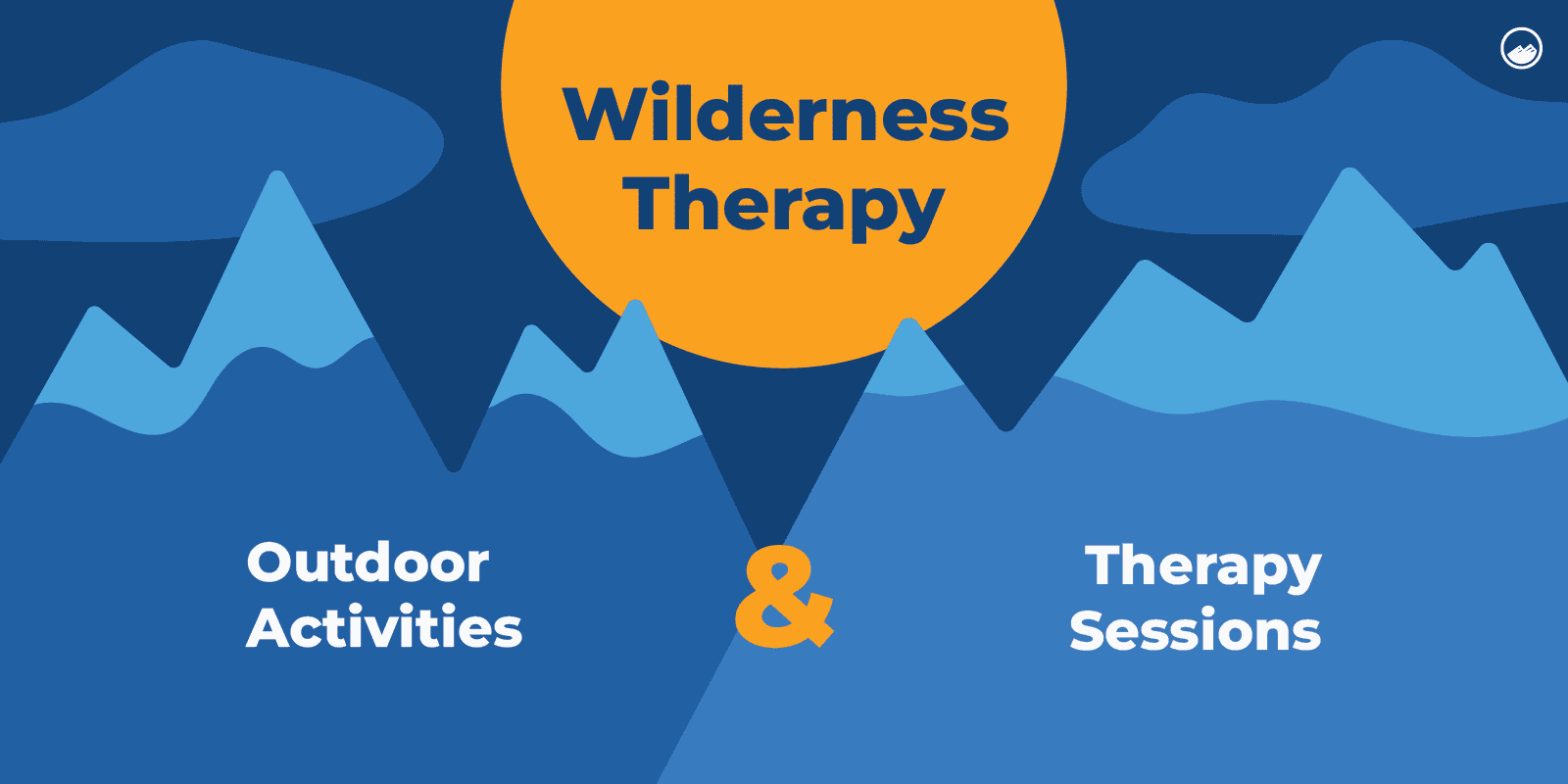
What Are Other Names For Wilderness Therapy?
Other names for wilderness therapy can also include outdoor behavioral healthcare or wilderness camps.
Why Is Wilderness Therapy Beneficial?
Wilderness therapy allows individuals to be in a new environment where they can identify and address any unhealthy thoughts or behavior processes away from the stress of daily life.
Wilderness therapy, also known as outdoor behavioral healthcare, combines individual therapy, group therapy and experiential education. It might involve time alone writing in a journal, building a fire with primitive tools, speaking with your therapist on a hike or sitting around a campfire and talking about your life with other participants.
These and other activities take place in a natural setting; the average wilderness therapy program lasts between eight and ten weeks. Adolescent programs often place participants in same-gender groups, though this practice is changing as understanding of gender diversity and nonbinary gender identities grows.
This extended period of time in nature helps to break old habits that keep us stuck, such as:
- Avoiding difficult emotions
- Numbing pain through substance use
- Hiding out in your room
Through wilderness therapy, an individual can learn life skills and healthy ways to cope with difficult situations and feelings.
Some of the unique aspects and benefits of wilderness therapy include:
- Personal growth through challenging experiences
- Build healthy connections and relationships
- Improve interpersonal effectiveness
- Developing healthy coping strategies
- Improved mental, emotional, and behavioral health
Through wilderness therapy, teens and young adults can find relief from depression, anxiety, and stress. Mental health professionals can use wilderness therapy programs to teach their patients how to manage symptoms of their mental health conditions.
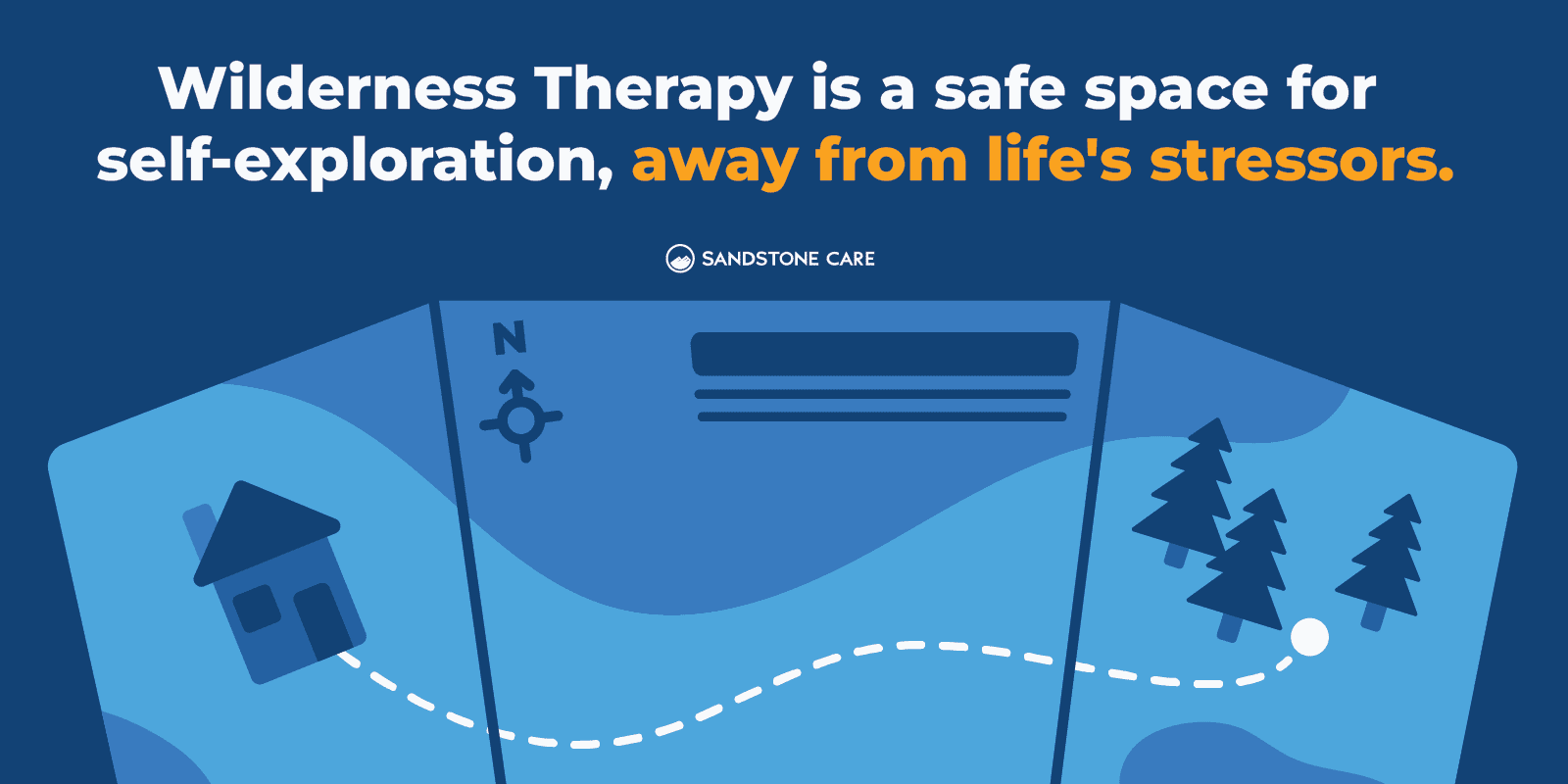
What Happens After Wilderness Therapy?
Aftercare planning is an essential part of wilderness therapy.
Treatment plans should always involve ongoing support that continues after completing a program.
What happens after wilderness therapy can look different for each individual. Some people may transition to another level of care or receive other types of ongoing support, like therapy.
It can be helpful to go to therapy sessions after wilderness therapy is over. This could help you to learn how to apply the lessons you learned in nature to your daily life. Individual therapy, group therapy, and family therapy can help target different parts of your healing journey.
Before you leave a wilderness therapy program, staff members will work with you to develop an aftercare plan that addresses your specific needs and ensures that you have access to ongoing support after you return home.
Understanding Wilderness Therapy
How Does Wilderness Therapy Work?
Wilderness therapy works by providing hands-on experiences in nature that help teach coping skills that can be extended to challenges you face back at home.
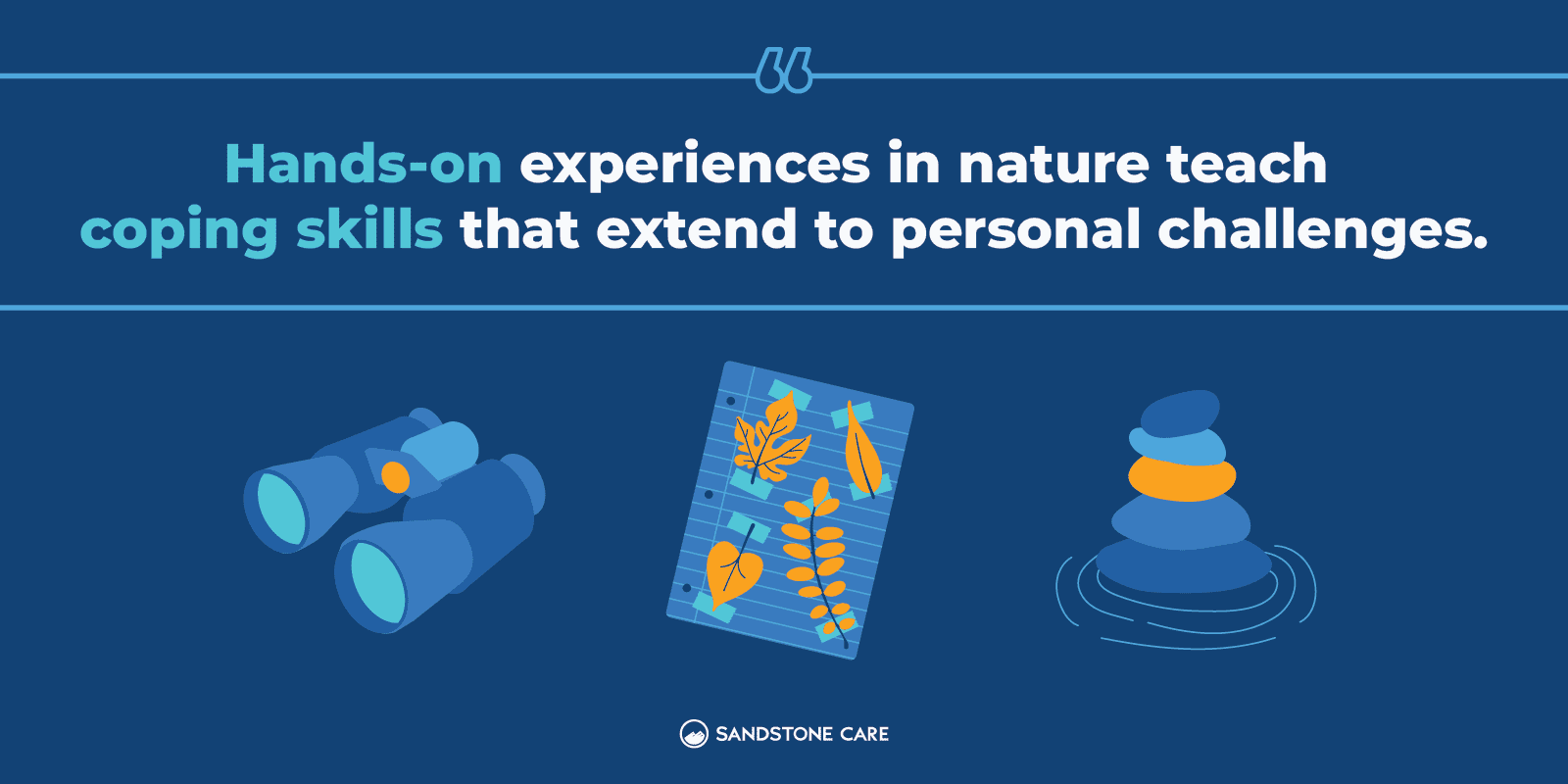
This idea of using nature and the outdoors as a modern treatment approach likely came about in the early 1900s, but people have been using nature as a meditative escape for centuries.
In the 1960s, Kurt Hahn, a German educator, created an outdoor education program to help adolescents with maladaptive behaviors. Over the years, wilderness therapy research has grown and has built a stronger argument for its effectiveness.
There are numerous wilderness therapy exercises and activities like hiking, games, expeditions, and much more. These exercises should always be performed under the guidance of a licensed therapist.
What Is the Difference Between Wilderness Therapy and Regular Therapy?
The main difference between wilderness therapy and traditional talk therapy is that wilderness therapy is provided in an outdoor environment rather than a clinical setting.
Being in a wilderness setting can significantly impact individuals’ mental health and teach them skills they can apply in their everyday lives to practice healthy habits. Research shows that spending time in nature reduces stress and lowers symptoms of conditions like ADHD, PTSD, depression, and more.
Traditional forms of therapy generally consist of talking through problems in an office environment, whereas, with wilderness therapy, an individual goes through hands-on experience guided by a health provider.
Wilderness therapy offers a unique environment where many people can find healing and self-discovery.
What Is the Goal of Wilderness Therapy?
One of the main goals of wilderness therapy is to immerse individuals in the outdoors and present reasonable challenges that help foster self-discovery and growth.
Every person’s goal going into wilderness therapy is going to look a little bit different, but the benefits are often the same!
Wilderness therapy programs are usually based on a treatment plan created by mental health professionals and staff members, individualized for each participant. In addition to working with therapists to transform maladaptive beliefs and behaviors, participants work with each other to complete tasks, such as setting up a tent.
Through individual and group activities, wilderness therapy helps participants develop self-confidence, communication and relationship-building skills, and trust. Being outdoors for this extended period of time also promotes participants’ physical health.
Psychologist Andrew Erkis explains how wilderness therapy benefits teens and young adults: “They’re in an emotionally safe place, they’re not going anywhere, and by the way, they’re exercising, they’re eating well, they’re sleeping well – they’re starting to look and feel great.”
Through wilderness therapy, a person should gain insight into themselves and the world around them and address any underlying issues that may be present.
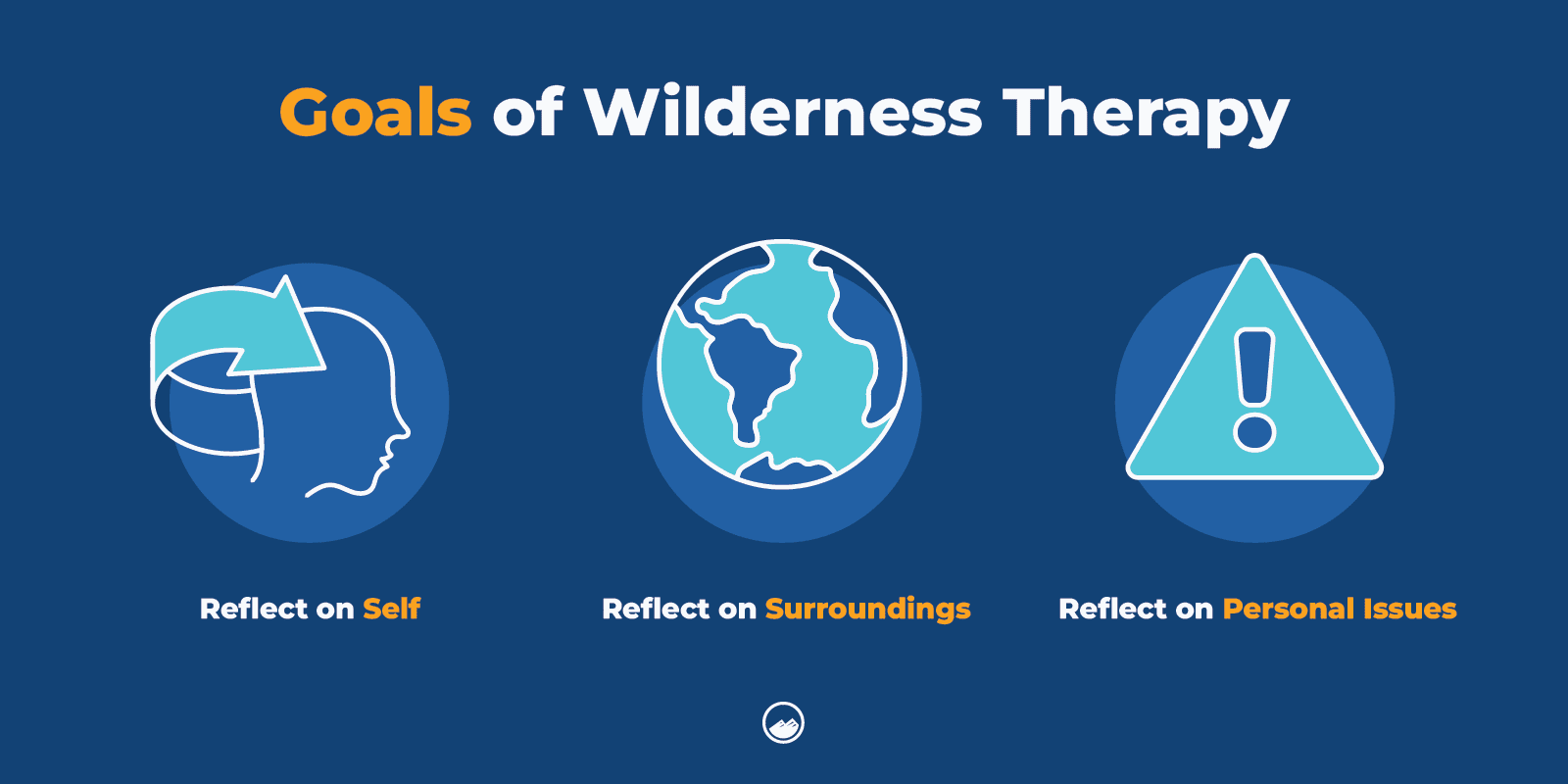
Does Wilderness Therapy Really Work?
There is considerable evidence that wilderness therapies are effective when done safely and correctly.
Wilderness therapies help create a safe space to build trust, teach skills to overcome challenges, and help foster a connection to nature that comes with many healing benefits, both physically and mentally.
Many parents may turn to wilderness therapy because it provides hands-on learning, helps build meaningful connections, and teaches young people confidence and self-worth.
An ongoing challenge in accessing wilderness therapy is the high cost of most programs since insurance plans generally don’t cover more than one session. Program quality also varies, so parents are wise to research programs run by licensed mental health professionals and that attend to the ethical, safety and health issues that can arise in the outdoors.
When it comes to wilderness therapy, you want to make sure that you are choosing a licensed, accredited, and reputable program.
The Role of Nature in Healing
Who Benefits From Nature Therapy?
Wilderness therapy can promote personal growth, self-reflection, and accountability for people of many different groups and ages.
Most commonly, wilderness therapy aims to help adolescents, high school students, and young adults identify and address underlying problems and challenges in their lives.
Can Nature Heal Anxiety?
Nature can play a significant role in helping to alleviate anxiety and contribute to a person’s overall mental well-being, but it’s important to understand that it may not be a standalone “cure” for anxiety disorders. Here’s how nature can help with anxiety:
- Stress Reduction: Spending time in natural settings, such as parks, forests, or near bodies of water, can reduce stress levels. The sights and sounds of nature can have a calming effect on the mind, which can help reduce feelings of anxiety.
- Mindfulness and Relaxation: Nature encourages mindfulness, which involves being fully present in the moment. Engaging with nature, whether through hiking, gardening, or simply sitting outdoors, can promote relaxation and reduce racing thoughts associated with anxiety.
- Physical Activity: Many outdoor activities, like walking, jogging, or hiking, involve physical exercise. Exercise is known to release endorphins, which are natural mood lifters. Regular physical activity can help manage anxiety symptoms.
- Connection to the Present: Nature provides a break from the constant stress of modern life. It allows individuals to disconnect from digital devices and connect with the natural world, providing relief from the pressures that often contribute to anxiety.
- Social Interaction: Engaging in outdoor activities with friends or family can enhance social bonds, reduce feelings of isolation, and provide a valuable support system for individuals dealing with anxiety.
Studies also link nature exposure to decreased anxiety and rumination. Studies show that spending time in nature and around “greenness” is associated with many mental health benefits.
Why Is Nature Important in Healing?
Being in nature can help you find peace and calm.
A soothing environment can help you find clarity and a break from overstimulating environments.
Through being in nature, you can release stress and find connections within yourself and the world around you. It allows you to find new perspectives, regulate your emotions, and practice mindfulness.
Spending time in nature also sparks insights that help you connect with yourself and understand things differently. Through this understanding and realization, you can find balance when it comes to managing your emotions and stress.
How Does Nature Heal the Mind and the Body?
Nature can heal both the mind and body by lowering stress hormone levels, encouraging the release of feel-good neurotransmitters, and reducing blood pressure.
Being exposed to nature can help manage stress and reduce symptoms of anxiety or depression. It can help reduce feelings of fear, anger, and sadness and promote feelings of calmness, happiness, and gratitude.
Exposure to nature can also come with numerous physical benefits, including a balanced heart rate, balanced hormones, and boosts of serotonin and dopamine.
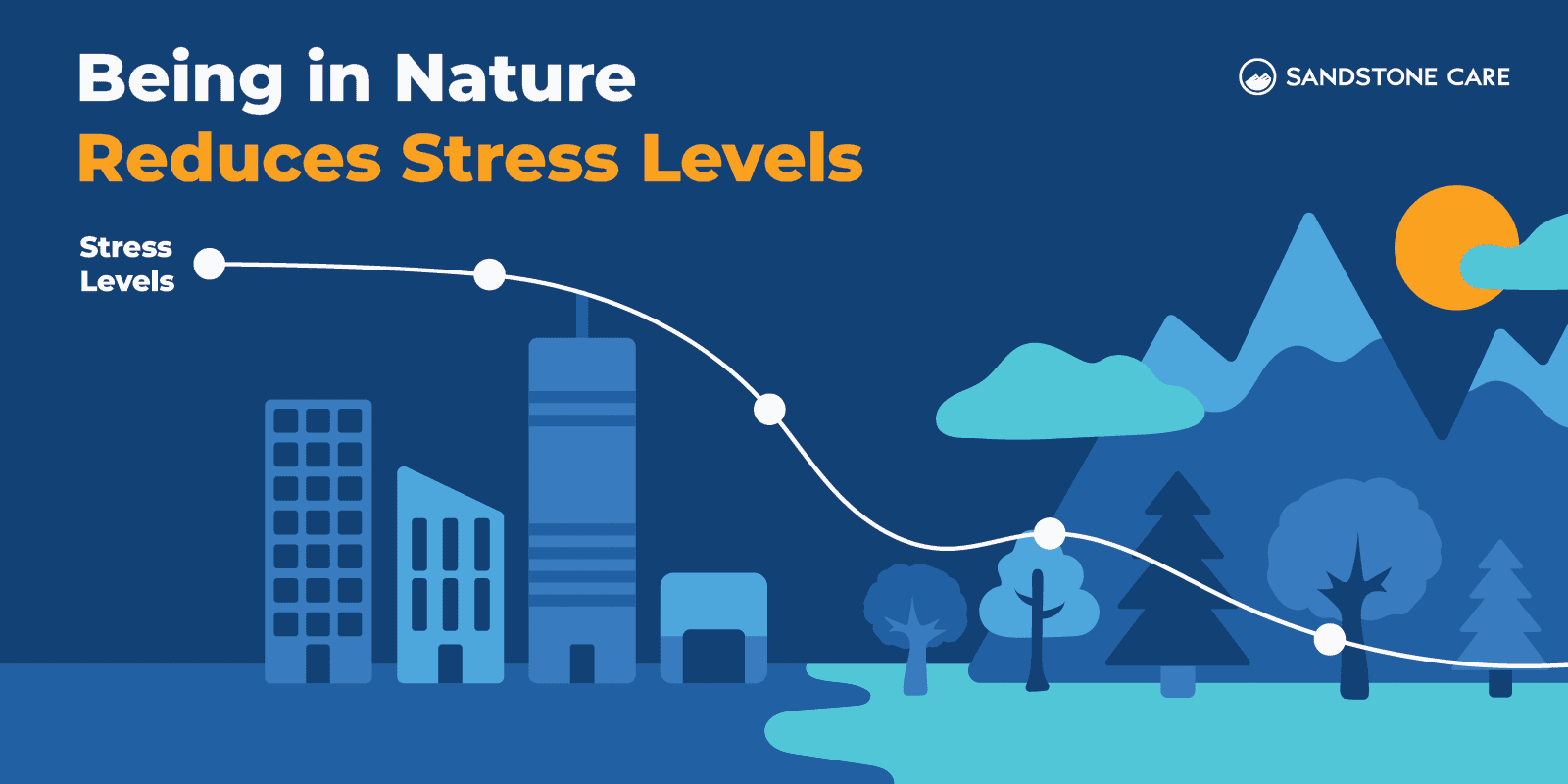
Wilderness Therapy Programs
Wilderness therapy programs take place outdoors with a variety of different techniques, experiences, and exercises that are done under the guidance of a licensed therapist.
In wilderness therapy programs, expeditions play a big role. They involve immersing yourself in nature and participating in various activities, challenges, and adventures to aid in your healing and self-discovery journey.
What Techniques Are Used in Wilderness Therapy?
Wilderness therapy employs a range of therapeutic approaches, such as experiential learning, to help people address emotional, behavioral, and psychological challenges while immersed in nature.
Some of the techniques commonly used in wilderness therapy include outdoor activities, group therapy, meditation, environmental stewardship, individual therapy, and experiential learning.
Some common activities and challenges involved in wilderness therapy can include:
- Hiking
- Rock-climbing
- Backpacking
- Games and problem-solving activities
- Group expeditions
- Recreational activities
- Adventure activities
- Outdoor activities
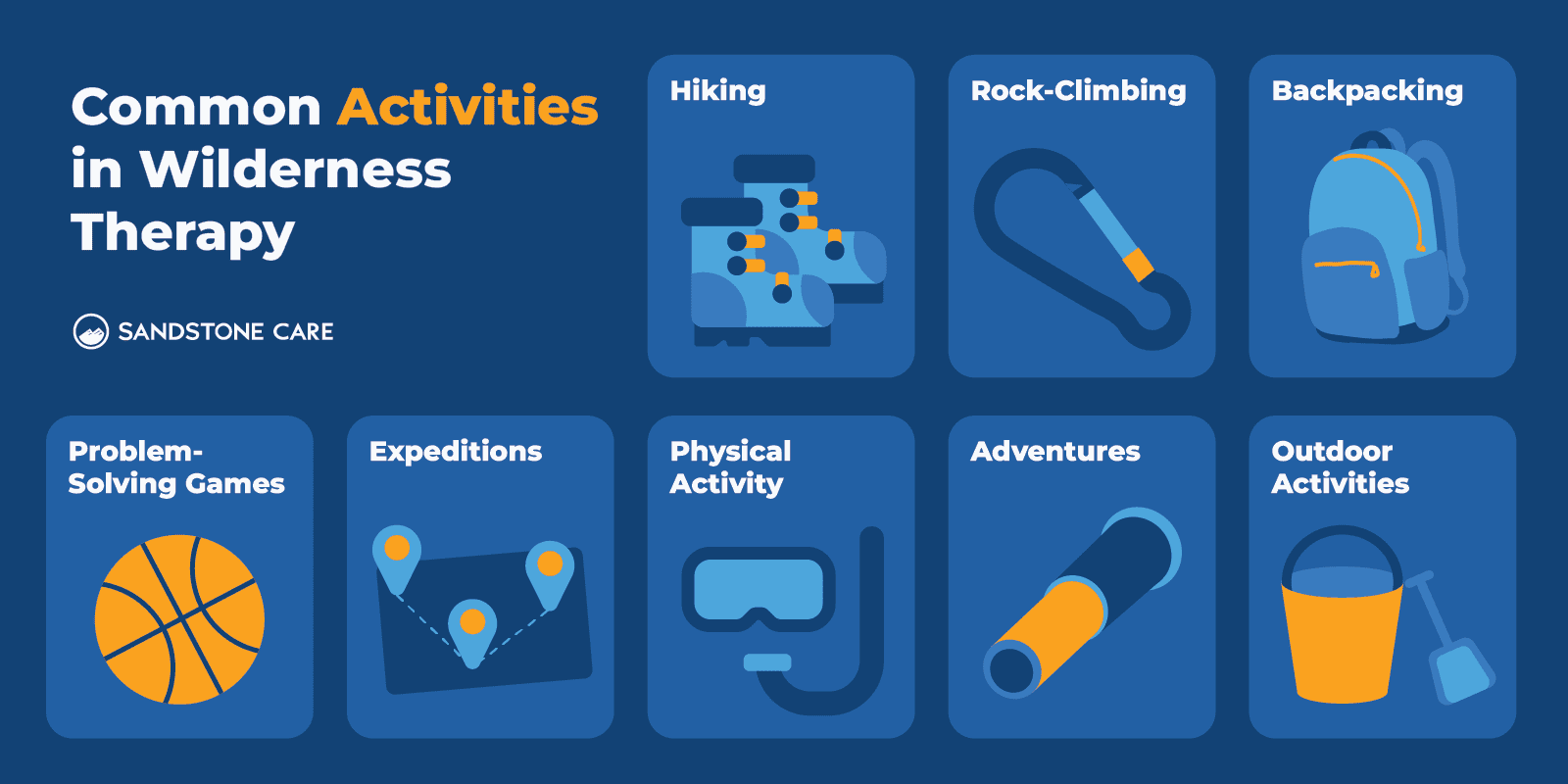
What Is a Wilderness Therapist?
A wilderness therapist or guide is there to help facilitate and participate in activities that will challenge the individual and help them learn more about themselves and the world around them.
They are there to help each individual find healing and achieve their goals while also making sure you are safe and supported throughout the process.
A wilderness therapist can help you work through your challenges and guide you on your journey of self-discovery and growth.
How Many Wilderness Therapy Programs Are There in the USA?
There are estimated to be around 25-30 wilderness therapy programs in the USA that meet the criteria of being a licensed program run by trained professionals.
Most of the wilderness therapy programs in the country are in Colorado, Utah, and Oregon. Experiential education can be life-changing, but it is essential that parents make sure they are choosing accredited programs.
Wilderness Therapy For Teens
Why Do Parents Send Their Kids to Wilderness Therapy?
Wilderness therapy is most commonly used for adolescents and teens facing challenges with ADHD, anxiety, depression, unhealthy behaviors, or other mental health issues.

Take the Quiz
See if you or a loved one needs substance use or mental health support
Developed by Chief Clinical Officer Sarah Fletcher LPC
Some parents may send their kids to wilderness therapy when they realize that some traditional forms of therapy are not working for them. They are looking to try a new environment that their child will be receptive to and gain important skills and insight into themselves and the world around them.
Wilderness therapy can also be a great option for parents who want their children to be in a healthy environment that challenges them and helps them learn healthy ways to cope.
What Are the Industry Standards?
Industry standards for wilderness therapy can include:
- Licensed therapists by the state in which they operate in
- Weekly individual therapy with a licensed professional
- Presence and supervision of trained guides
- Supportive and respectful communication
- Active engagement with each and every clients
- A strong ethic of care and accountability
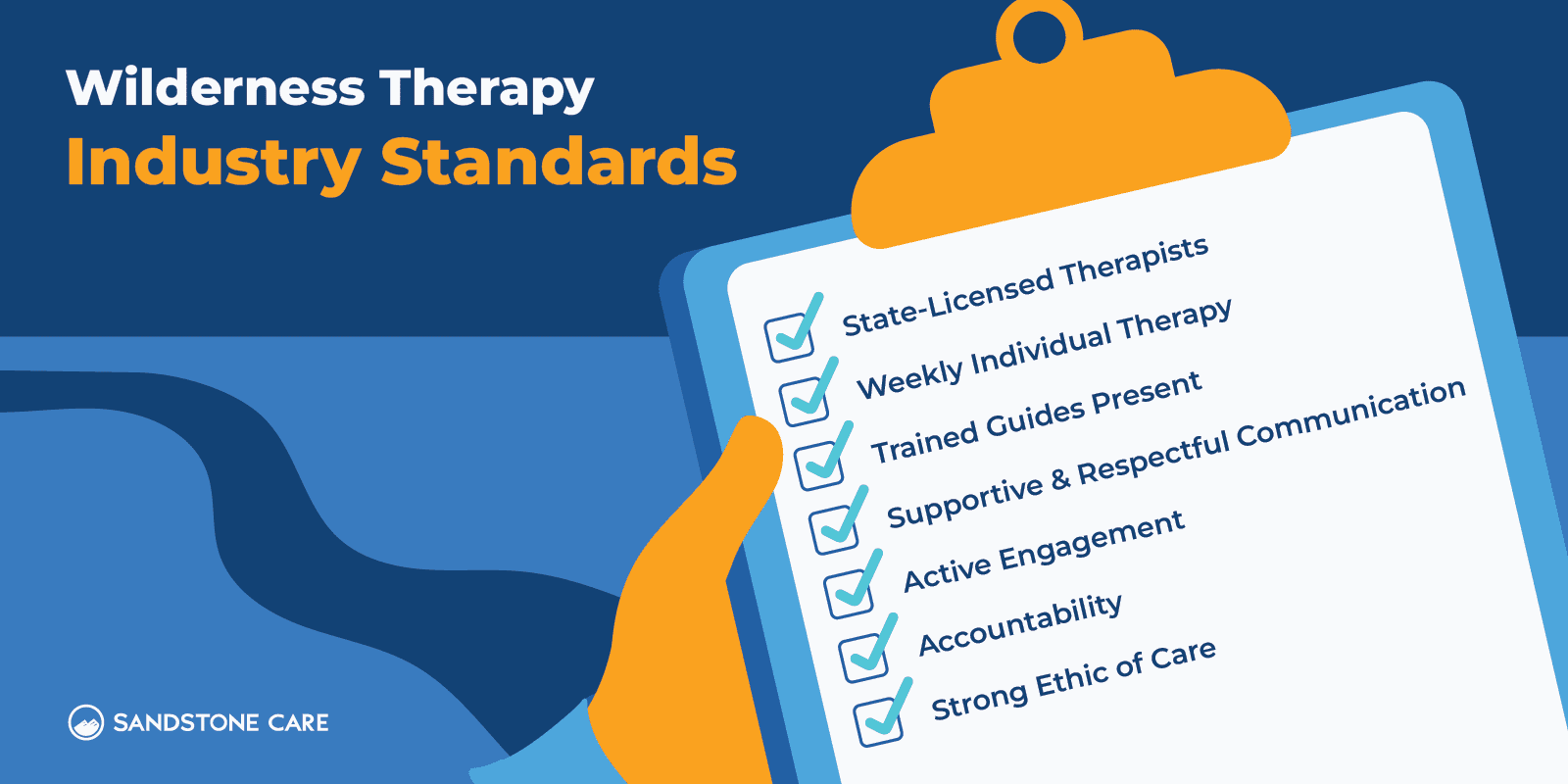
What Are the Benefits of Wilderness Therapy For Teens?
Some of the many benefits of wilderness therapy for teens can include:
- Personal growth and development
- Improved interpersonal skills
- Physical activity
- Build healthy coping mechanisms for a variety of mental health conditions
How Can Wilderness Therapy Help Teens Overcome Their Challenges?
Wilderness therapy helps teens overcome their challenges by providing them with a brand new context where they can learn the root causes of their challenges while being guided by mental health professionals.
Many teens may have a hard time in traditional settings, even at school or in general groups of people. They might feel like their reputation is already set, and that makes it difficult to feel like they are allowed to change and grow.
Wilderness therapy provides a new and safe space for teens to go to, be themselves, connect with others, and learn skills to help them manage any challenges they face.
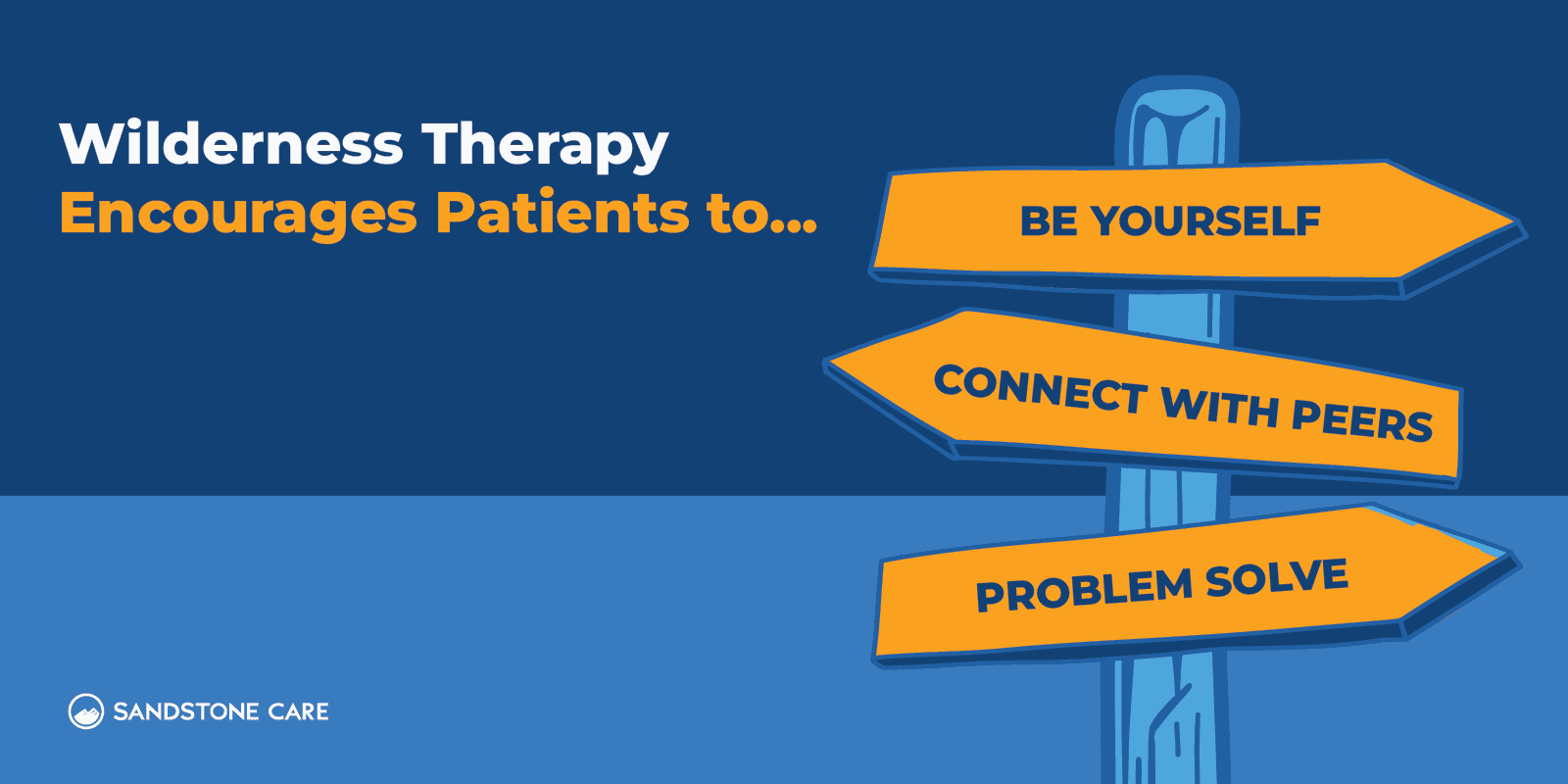
Wilderness Therapy For Young Adults
Why Is Wilderness Therapy Important For Young Adults?
Wilderness therapy is especially valuable for young adults because it aligns with the phase of life where they’re navigating significant changes and challenges.
This period often involves seeking independence, self-discovery, and learning essential life skills. Wilderness therapy takes them into nature, providing a structured yet transformative setting to address personal issues, boost resilience, and deepen self-awareness.
Wilderness therapy is important for young people because it serves as a way to help them connect with themselves and the people and world around them.
How Is Wilderness Therapy Beneficial For Young Adults?
Wilderness therapy empowers young adults to transition into independence with the skills, resilience, and self-awareness needed for a successful journey into adulthood.
Some of the major benefits of wilderness therapy for young adults can include:
- Self-confidence and self-esteem
- Self-awareness
- Emotional resilience
- Improved social skills and interpersonal communication
- Stress relief
- Managing symptoms of mental health disorders like ADHD, anxiety, or depression
What Challenges Can a Wilderness Program Help Young Adults Overcome?
Wilderness programs can help young adults overcome challenges like mental health issues, substance abuse, low self-esteem, academic or career struggles, relationship issues, lack of direction, unhealthy habits, or risk-taking behaviors.
Wilderness programs can also help young adults fulfill their need for independence and life skills.
Choosing the Right Wilderness Therapy Program
Figuring out the right wilderness therapy program can be challenging because you want what is best for you or your loved one. With the growing amount of different outdoor therapies and experiences offered, you want to make sure you choose one that is safe, reputable, licensed, and best fitting for your needs.
Some tips on how to choose the right wilderness program can include:
- Keep an eye out for red flags
Sometimes programs emerge that are not actually accredited and can pose risks to your child. Some red flags include banning communication with parents, extending the program length without warning, and not informing parents of the program’s location. - Consider the program philosophy
When reaching out to a potential treatment program, make sure to ask questions. Find a program that aligns with your values and goals and treats you as a whole person. - Make sure they are licensed and have accreditation
One of the most common concerns about wilderness therapy is its safety. When considering wilderness treatment programs, make sure they are licensed and accredited. - Ask about their safety measures
You want to make sure that you feel confident and comfortable when you make a decision, whether it be for you or when helping a loved one. Ensure they are taking all the necessary safety measures based on questions, reviews, and research. - Consider their aftercare support
Aftercare is an essential part of any treatment program. You want to ensure that the program you choose is genuinely there to help you and support you even after your program ends. Aftercare programs should focus on ensuring that you have ongoing support and
access to resources that can help you transition to a new level of care or back to your life.
Making the right decision for a wilderness therapy program can be easier when you have someone from your support system, such as a family member or a loved one, helping you. Reaching out for help can be hard, but it is an important step toward growth and healing.
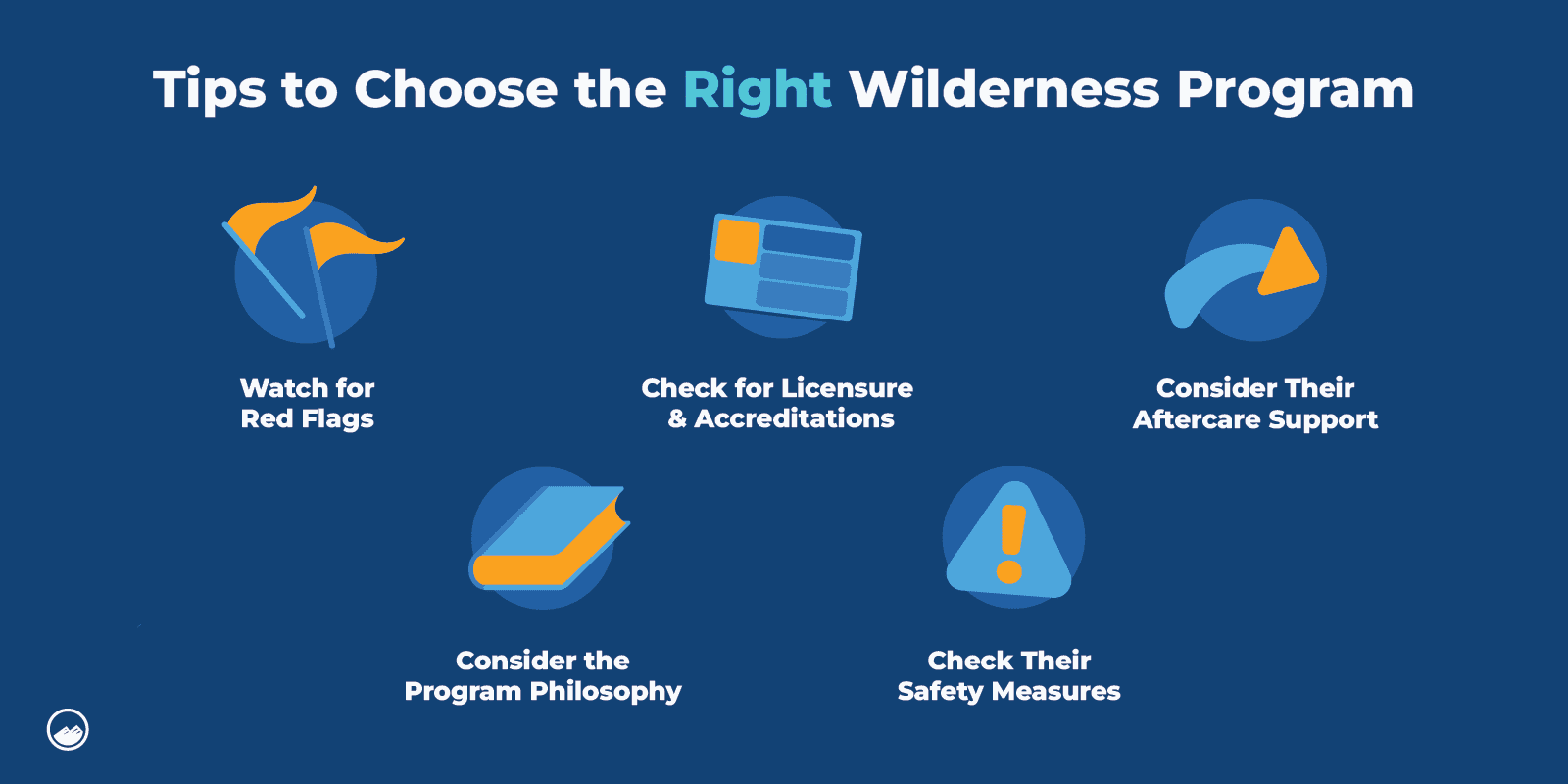
FAQ
You Have Questions, We Have Answers.
Our goal is to provide the most helpful information. Please reach out to us if you have any additional questions. We are here to help in any way we can.
Being in nature promotes both mental and physical well-being.
Exposure to nature has the power of reducing blood pressure, balancing your heart rate, decreasing levels of stress hormones, and triggering the release of important “feel-good” brain chemicals like dopamine and serotonin.
Being in sunlight and outdoors has been shown to decrease symptoms of depression, improve feelings of well-being, and help in
Being in nature has been found to positively impact individuals with trauma and post-traumatic stress disorder (PTSD).
According to Health Psychology Open, a study found that veterans with PTSD had positive associations with a natural setting in helping them find remedies and relief from their conditions and symptoms.
Being outside can balance a person’s heart rate and stress hormones and help boost the release of “feel-good” brain chemicals, which can be helpful in managing the symptoms of PTSD.
Adventure therapy is experiential therapy outside traditional in-office settings and involves challenging activities that help individuals find healing.
This form of therapy can be used for mental health treatment, especially for teens and young adults, because it gives them a safe environment where they can have hands-on experience, build meaningful connections, and learn important life skills and healthy coping mechanisms.
Spending time in nature has been associated with positive effects on mental health, including help with depression, anxiety, and mood disorders.
Exposure to outdoor environments is believed to help improve thinking, attention, memory, and creativity.
One possible challenge of wilderness therapy is the sudden change of environment. Going from a familiar routine to a whole new place can be difficult and overwhelming to transition to.
This is why it is so important to find a program that has staff who truly care and is passionate about what they do and is properly licensed. Wilderness programs should not be boot camps, but places of healing.
Because of the physical activity involved in wilderness therapy, there is also a higher risk of physical injury compared to going through treatment in a traditional in-office setting.
However, these risks can be reduced by choosing a treatment program with proper safety measures and licensed and trained staff.
Lastly, wilderness therapy programs may have a wide range between the process and the activities that are involved. Making sure to ask questions when talking with representatives can help give you more clarity and a better idea of how well a program operates.
The controversy associated with wilderness therapy is centered around the idea that some wilderness therapy can be dangerous, counterproductive, and overly intense. This is often referred to as the “troubled teen industry”.
Some teens have shared concerning stories of negative experiences in programs that have claimed to be “wilderness therapy.”
These experiences can leave victims with more mental health issues than they began with. This is why it is so important to research different programs and make sure it is a licensed program with licensed professionals.
Check testimonials closely to ensure that others can vouch for the program as well.
Many of these negative experiences happen in places that claim to provide “wilderness therapy programs” yet are not licensed, monitored, or accredited.
Many of the negative experiences with wilderness therapy are due to a lack of structure, monitoring, and licensing.
Some centers may offer “wilderness programs” yet may not operate ethically, are not monitored, and are run by unlicensed and inexperienced staff.
When considering wilderness therapy programs, it is very important to make sure the program you are looking at has proper licensing and is the best fit for you or your loved one.

We’re available 7 days a week to help answer any questions you may have.
Wilderness therapy is a form of experiential therapy that strives to help adolescents, teens, and young adults face challenges and promote healing, growth, and self-discovery. Sandstone Care is here to support teens and young adults with mental health and substance use disorders.

